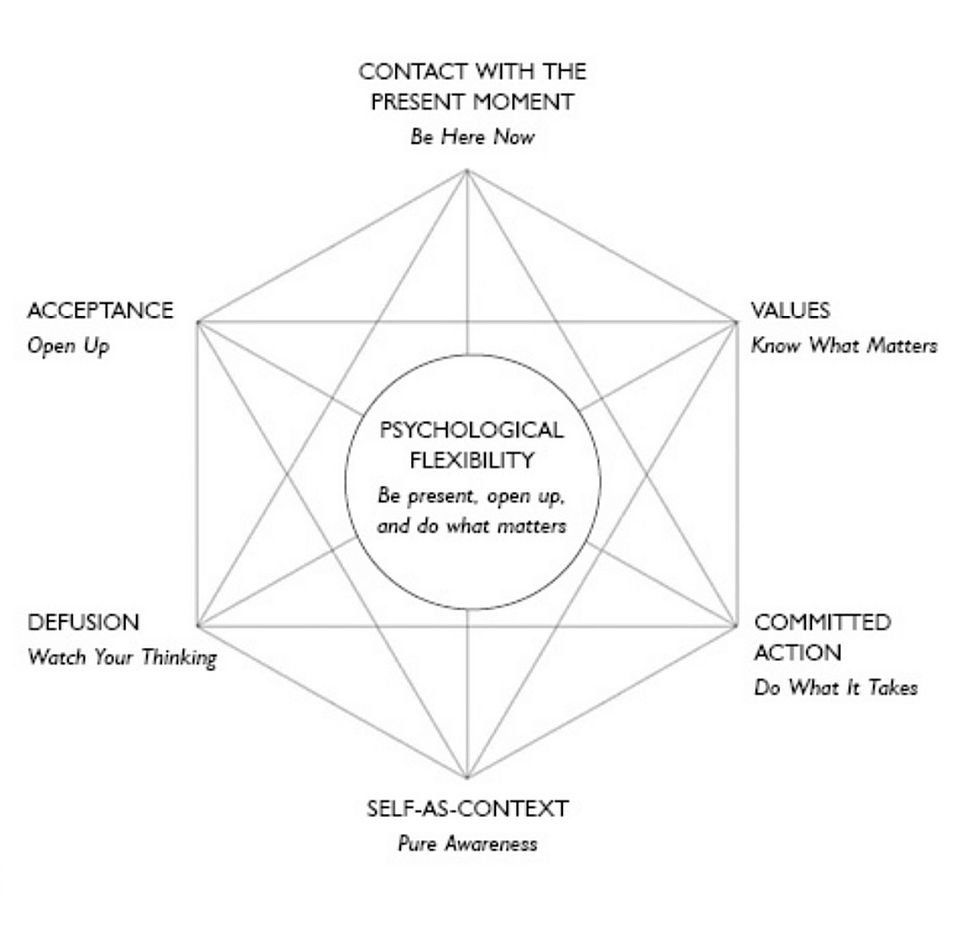Discover Cognitive Behavioural Therapy (CBT)
Cognitive Behavioural Therapy (CBT) is an umbrella term for evidence-based approaches that help you understand how your thoughts, emotions, and behaviours influence one another.
Rather than simply reducing symptoms, CBT focuses on building psychological flexibility — the ability to stay steady and self-directed when life feels uncertain or challenging.
At its core, CBT develops the skills to notice what’s happening internally, reflect before reacting, and respond in ways that serve your values instead of your fears. It’s not about suppressing emotions or forcing optimism, but learning to meet difficulty with clarity and composure.
Over time, this process builds three interlocking strengths:
Clarity — Seeing your patterns clearly and understanding what drives them, without harsh judgment.
Challenge — Challenging limiting beliefs and experimenting with new, more adaptive responses.
Change — Integrating these insights into daily life so you can stay grounded and flexible, even when things get tough.
Together, these cultivate a robust sense of self — one that can navigate pressure, uncertainty, and emotion without losing balance or direction.
CBT’s philosophical roots trace back to Stoicism.
Over 2,000 years ago, the Greek philosopher Epictetus said:
This insight is empowering.
Someone’s behaviour doesn’t directly make me angry; I create anger in response to how I interpret it. When we demand that the world conform to our expectations — “You shouldn’t treat me like this!” — we set ourselves up for frustration and hurt.
CBT helps us redirect that energy toward what’s within our control: our perspective, our choices, and our responses.
The circle of control model illustrates this — focusing attention on what we can influence rather than what we can’t.
From this stance, we might say:
“I would like you to treat me well, but I accept that you don’t have to.”
Acceptance doesn’t mean approval or resignation — it means choosing peace over prolonged struggle.
The Evolution of CBT.
CBT has grown over decades into a diverse and integrative field:
First Wave – Behaviour Therapy (1950s–60s)
Focused on learned behaviours and how they can be changed through conditioning.Second Wave – Cognitive Therapy (1970s–90s)
Introduced the role of thoughts and beliefs in shaping emotions and behaviour.Schema Therapy (1990s–2000s)
Deepened CBT by connecting present-day patterns to early experiences.
Schema Therapy explores the emotional and developmental origins of long-standing difficulties — how unmet needs in childhood can create “schemas” or core beliefs that still influence adult life. It combines the structure of CBT with emotional exploration, imagery work, and reparenting to address these deeper layers of self.Third Wave – Mindfulness and Acceptance-Based Therapies (2000s–present)
Modern approaches such as Acceptance and Commitment Therapy (ACT), Dialectical Behaviour Therapy (DBT), and Mindfulness-Based Cognitive Therapy (MBCT) integrate mindfulness, acceptance, and compassion. These therapies move beyond symptom reduction — helping people live meaningfully, even when pain or uncertainty remain.
Depth and Direction.
Across its evolution, CBT has developed into far more than symptom management or thought correction. It recognises the whole system — our bodies, our histories, and our emotional wiring — and uses that understanding to support change in the present.
Modern CBT considers:
The nervous system – how states of safety or threat influence emotion and decision-making.
Early learning and attachment – how formative experiences shape current patterns.
Context and values – how we can move forward toward what matters, rather than away from discomfort.
In this way, CBT bridges depth and practicality: exploring where our struggles come from, while developing the tools to live differently despite them.


